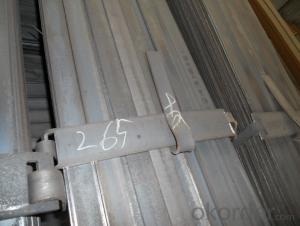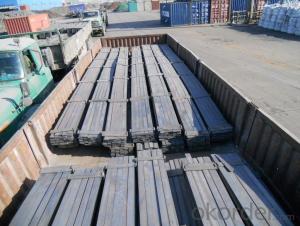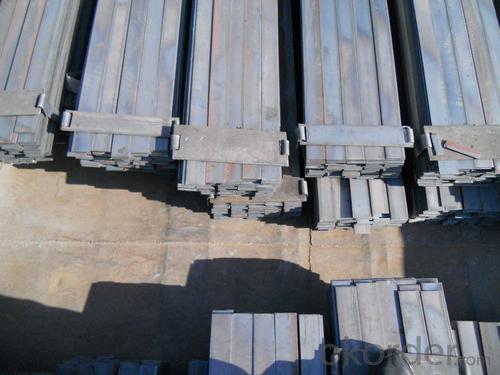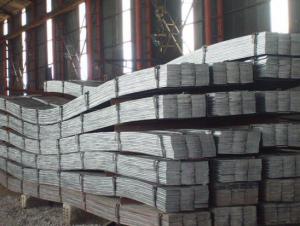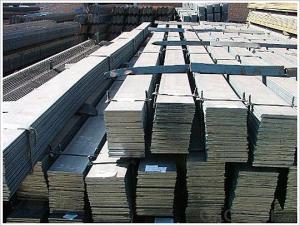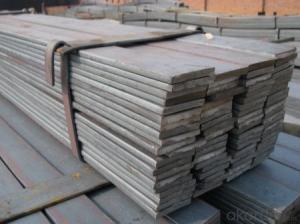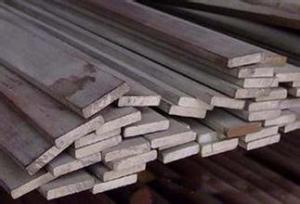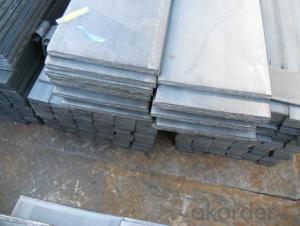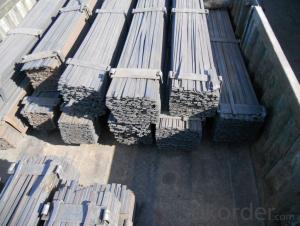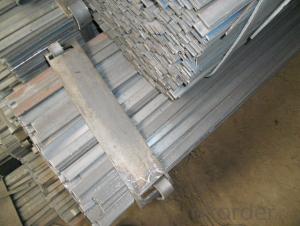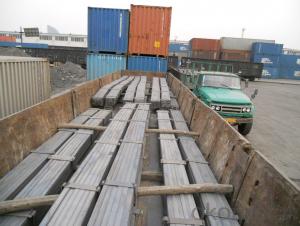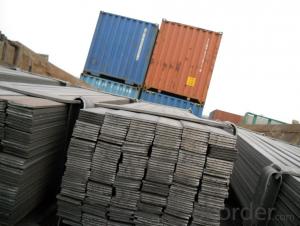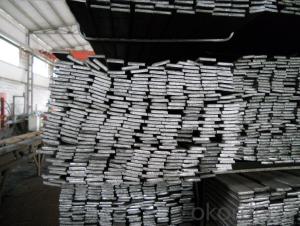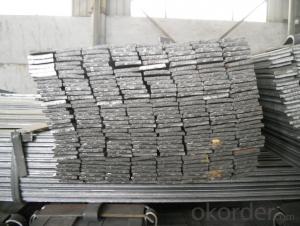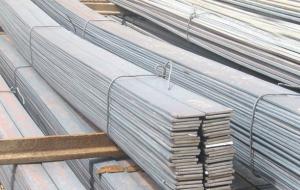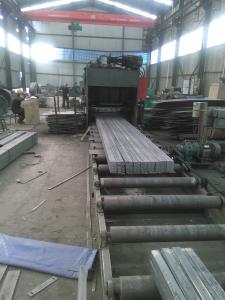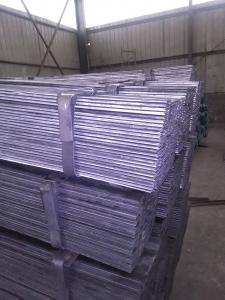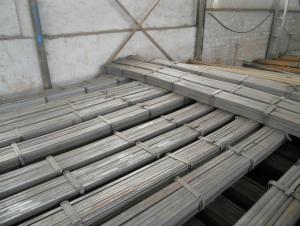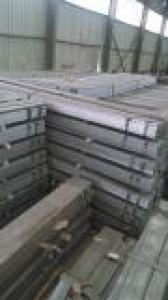GB Standard Steel Flat Bar with High Quality 45mm
- Loading Port:
- Tianjin
- Payment Terms:
- TT OR LC
- Min Order Qty:
- 25 m.t
- Supply Capability:
- 15000 m.t/month
OKorder Service Pledge
OKorder Financial Service
You Might Also Like
Product Description of GB Standard Steel Flat Bar with High Quality 45mm:
Specification of GB Standard Steel Flat Bar with High Quality 45mm:
-Standard: GB
-Material: Q235
-Length: 6m, 12m
-Size:
Size(mm) | Mass(Kg/m) |
45*5 | 1.77 |
45*8 | 2.82 |
45*10 | 3.53 |
Package & Delivery of GB Standard Steel Flat Bar with High Quality 45mm:
1.The steel flat bars will be packed in bundle with steel wire at each end of every bundle and color marking in order to help the customer to recognize his goods more easily at sight.
2. And the steel flat bars could be loaded into 20ft or 40ft container, or by bulk cargo. If the weight of each bundle reaches more than 3.5 mt, the loading by break bulk cargo should be choosed. When the weight of each bundle reaches less than 3mt, the loading by container should be choosed.
3.As for the transportaion from mill to loading port, the truck will be usually used. And the maximum quantity for each truck is 40mt.
4.All in all, we could do in accordance with customer's request.
FAQ:
Q1: Why buy Materials & Equipment from OKorder.com?
A1: All products offered by OKorder.com are carefully selected from China's most reliable manufacturing enterprises. Through its ISO certifications, OKorder.com adheres to the highest standards and a commitment to supply chain safety and customer satisfaction.
Q2: How do we guarantee the quality of our products?
A2: We have established an advanced quality management system which conducts strict quality tests at every step, from raw materials to the final product. At the same time, we provide extensive follow-up service assurances as required.
Q3: How soon can we receive the product after purchase?
A3: Within three days of placing an order, we will arrange production. The shipping date is dependent upon the quatity, how many sizes you want and the plan of production, but is typically 1 month to 2 month days from the beginning of production.
Images of GB Standard Steel Flat Bar with High Quality 45mm:
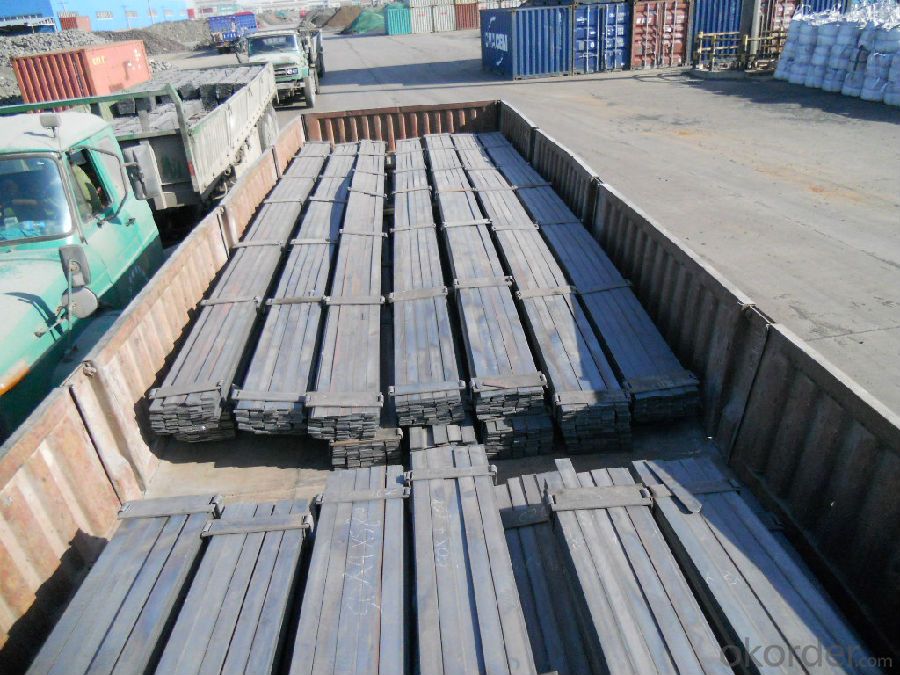

*If you would like to get our price, please inform us the size, standard/material and quantity. Thank you very much for your attention.
- Q: How can copper clad steel ground electrode and galvanized flat steel be welded?
- Using hot fusion welding. It is welded firmly and will not corrode the weld because of electrochemical action.The common copper clad steel wire electrode is copper wire.
- Q: Can steel flat bars be used for manufacturing storage racks?
- Yes, steel flat bars can be used for manufacturing storage racks. Steel flat bars are known for their strength and durability, making them an excellent choice for constructing storage racks that need to support heavy loads. The flat shape of the bars also provides a stable surface for storing various items. Additionally, steel flat bars can be easily welded or bolted together to create the desired rack configuration, making them versatile and customizable for different storage needs.
- Q: Are steel flat bars commonly used in the furniture industry?
- Steel flat bars are widely utilized in the furniture industry due to their versatility and durability, which renders them an excellent option for constructing diverse furniture pieces. Commonly employed as structural supports or legs for tables, chairs, and other furniture items, these bars offer stability and strength, ensuring the furniture's ability to endure weight and frequent use. Moreover, furniture manufacturers and designers favor steel flat bars due to their ease of welding, drilling, and shaping to meet specific design specifications.
- Q: What are the different methods of surface coating for steel flat bars?
- There are several different methods of surface coating for steel flat bars, each with its own advantages and disadvantages. Some of the most common methods include: 1. Hot-dip galvanizing: This method involves immersing the steel flat bars in a bath of molten zinc. The zinc coating provides excellent corrosion resistance and can protect the steel for many years. However, the process can be expensive and may result in a thicker coating that can affect the dimensions of the flat bars. 2. Electroplating: Electroplating involves passing an electric current through a solution containing metal ions, causing them to deposit onto the surface of the steel flat bars. This method can provide a thin, uniform coating that improves corrosion resistance and can be customized with different metals such as zinc, nickel, or chromium. However, it may not be as durable as other coating methods. 3. Powder coating: In this method, a dry powder is applied to the surface of the steel flat bars and then heated to form a protective layer. Powder coating provides a strong, durable finish that is resistant to chipping, scratching, and fading. It also offers a wide range of colors and finishes. However, it may not provide as high a level of corrosion resistance as other coating methods. 4. Paint coating: Paint is often used as a surface coating for steel flat bars due to its cost-effectiveness and versatility. It can be applied by spraying, brushing, or dipping, and can provide a decorative finish as well as some level of corrosion resistance. However, paint coatings may not be as durable or long-lasting as other methods, and may require periodic maintenance and reapplication. 5. Organic coatings: Organic coatings, such as epoxy or polyurethane, are often used for steel flat bars that require a high level of chemical and corrosion resistance. These coatings can provide excellent protection against chemicals, abrasion, and weathering, but may be more expensive and require specialized application techniques. Overall, the choice of surface coating method for steel flat bars depends on factors such as the desired level of corrosion resistance, aesthetics, cost, and specific application requirements. It is important to carefully consider these factors and consult with experts to determine the most suitable coating method for a particular project.
- Q: What are the maximum load capacities of steel flat bars?
- The maximum load capacity of steel flat bars depends on various factors such as the dimensions of the bar, the type and grade of steel used, and the method of load application. Steel flat bars are commonly used in construction, manufacturing, and industrial applications due to their strength and versatility. The load capacity of a steel flat bar is typically determined by its bending and tensile strength. The bending strength refers to the maximum amount of stress a flat bar can withstand before it bends or deforms permanently. Tensile strength, on the other hand, is the maximum amount of stress the bar can handle before it breaks or fractures. To determine the load capacity of a specific steel flat bar, engineers and designers often refer to standardized tables or graphs provided by the steel manufacturer or relevant engineering codes and standards. These resources provide information on the maximum allowable loads for different bar sizes and steel grades. For example, a 1-inch by 1/4-inch steel flat bar made from mild steel might have a maximum allowable load capacity of approximately 3,000 pounds when supported at both ends and evenly distributed along its length. However, this value can vary depending on the specific steel grade and quality. It is crucial to consult reliable sources and consider the specific application requirements when determining the maximum load capacity of steel flat bars. Seeking the advice of a structural engineer or referring to relevant engineering codes and standards is recommended to ensure the safe and optimal use of steel flat bars in any given application.
- Q: Is the laying of a 40X4 flat steel for fire fighting metal trunking?
- Without laying, the cable bridge, each section of the joint, there is a copper wire to prepare flat belt connected, it is bridge grounding jumper cable.
- Q: Are steel flat bars suitable for making storage racks?
- Yes, steel flat bars are suitable for making storage racks. They are strong, durable, and can support heavy loads, making them an ideal choice for storage rack construction. Additionally, steel flat bars can be easily welded or bolted together to create sturdy and customizable storage solutions.
- Q: The technological process of flat steel
- The spring flat steel is made by converter smelting process. Compared with the prior art, the utility model has the following advantages and positive effects:1. refining flat steel with converter, mainly using hot metal as raw material, less harmful elements in molten iron, the quality of flat steel produced is guaranteed.2., because of the high rate of finished products and less power consumption, the cost per ton is lower than that of the electric furnace.3. the molten steel is directly cast into billets, omitting the cogging process and reducing the cost.4., continuous casting billet, fixed rate is high, can ensure flat steel fixed rate, to meet the needs of users.
- Q: Are steel flat bars corrosion resistant?
- Steel flat bars are not inherently corrosion resistant. However, the level of corrosion resistance depends on the type of steel used and any additional treatments or coatings applied to the surface of the bars. Stainless steel flat bars, for example, are highly corrosion resistant due to the presence of chromium, which forms a protective oxide layer on the surface. On the other hand, carbon steel flat bars are more prone to corrosion, especially in environments with high moisture or exposure to corrosive substances. To enhance the corrosion resistance of carbon steel flat bars, they can be galvanized or coated with protective coatings like paint or epoxy. Overall, it is important to consider the specific type of steel and any additional treatments when assessing the corrosion resistance of steel flat bars.
- Q: Can steel flat bars be used in marine applications?
- Yes, steel flat bars can be used in marine applications. They are commonly used for constructing ship hulls, offshore platforms, and other marine structures due to their high strength, durability, and resistance to corrosion. However, it is important to use marine-grade steel, such as stainless steel, to ensure optimal performance and longevity in saltwater environments.
Send your message to us
GB Standard Steel Flat Bar with High Quality 45mm
- Loading Port:
- Tianjin
- Payment Terms:
- TT OR LC
- Min Order Qty:
- 25 m.t
- Supply Capability:
- 15000 m.t/month
OKorder Service Pledge
OKorder Financial Service
Similar products
Hot products
Hot Searches
Related keywords

